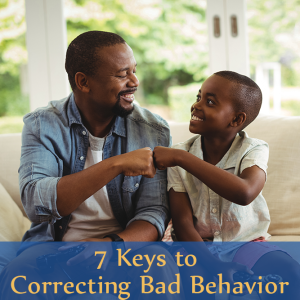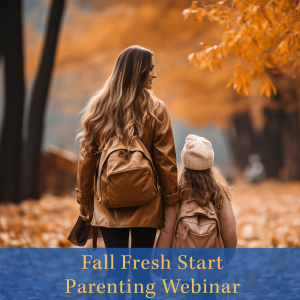Helping Young Children Accept “No” Answers
“Nicholeen,
I was wondering how you teach these principles to the younger children. My children are (almost) 8, (almost) 6, 3.5, 20 months, and a 2 week old(not that I expect to be doing this with the newborn right away). I can usually expect my older two to follow instructions, but the 3 year old and 20 month olds do not. I realize that the 20 month old is still learning, and “no” is her favorite word. When I ask her to do something, if she doesn’t do it right away, I help her to do it, and then praise her for doing it. What age do you start teaching the instruction rules to the child?”
“No” Has Power, But “OK” Is Just As Easy
It is very common for toddlers to love the word NO, because that word carries power with it. Everyone who has power over the toddler uses the word NO, so they automatically believe that using the same word will give them power of some sort. They usually get a laugh at the very least, so they soon learn that telling people NO, gets them attention and what they want. Once this lesson is learned, even if saying NO isn’t always rewarded, they stick to it hoping to have control over their environment, because it is the only thing that has worked so far in their short lives. Always remember that small people know they are small and feel small. I distinctly remember being small and feeling so helpless. I was always looking for ways to control my environment as a child.
Teach the 20 month old to say, “OK”. That is almost as easy as saying NO. Tell her, “Say OK.” And then when she says it, cheer and praise. Practice this like it is a game, and get the other children involved too. It is OK to go a little crazy for a week or two whenever anyone says, OK. Even your eight year old will grin when you praise in a really excited way.
After she knows that whenever she says OK someone is happy for her, then start giving her instructions or No answers and see if she says OK. If she does, go crazy. Learning this skill is a HUGE accomplishment in self mastery, for a 20 month old. If she doesn’t say anything, or says NO etc, they simply say to her, “Say OK.” I would be surprised if she didn’t go right into the mode of saying OK and waiting for you to praise her, because she already trained herself to say OK when prompted to.
Tell Them What To Say
It is just fine to tell our children what to say sometimes. I know it seems unnatural, but think about it. How do they learn what kinds of things to say in their prayers, or how to answer the telephone? We tell them the exact words to say. It is perfectly appropriate for parents to teach their children the exact words to say when communicating with their parents as well.
I often tell my for year old things like: say OK, that was an instruction, that was a NO answer, you should say, “Mom, I know you want me to …but I want to…” Yes, I even go as far as to tell my children the exact words that they need to tell me in their disagreements, so that they can practice doing it correctly and start to feel comfortable speaking effectively.
It is fantastic that you are helping your little one learn how to do tasks by doing them with her. That is perfect for teaching things with young children or when a task is being learned for the first time. We should all get in the habit of decreasing our children’s anxiety about chores, while at the same time increasing their confidence, by doing the chores with them.
Phrasing An Instruction Correctly
This may be picky, but I wouldn’t ever ask my children to do tasks. If you want to be polite, say, “I need you to make your bed please.” If you say, “Will you make your bed please?” Then your child has every right to say NO to you, and you better not get mad, because you asked a question. Parents have stewardship over children, so if a parent thinks that it is in the best interest of the child to do a task, then the parent only needs to give an instruction. Asking can be translated as begging and can inadvertently put the parent in a submissive role.
I start teaching children to follow instructions when they can understand what I say and when they can tell me what they want. This is a different time for each child. The best way to teach following instructions and accepting NO answers to a toddler is Praise, and Pre-teaching. Create situations where she will do the instruction correctly, and then praise her a lot. Do the same for Accepting No. She will most likely learn to follow instructions because she likes the praise she gets when she does things well. Be sure to use the same words that you will always use, such as instruction, etc. She is not too young to learn that word. She is learning words like breakfast, and telephone, she can learn instruction too.
If she doesn’t say OK when she should, prompt her by saying, “Say OK” or “You need to say OK.” Then praise her.
If she whines, tantrums, etc, she needs to go to time-out for 1 minute, because she is one. This is one minute in a calm state. Wait until she is calm to start her one minute. Other privilege loss will be too complicated for her handle at this point. Being separated from the group will teach her that her behavior was not acceptable for the group.
Nicholeen





